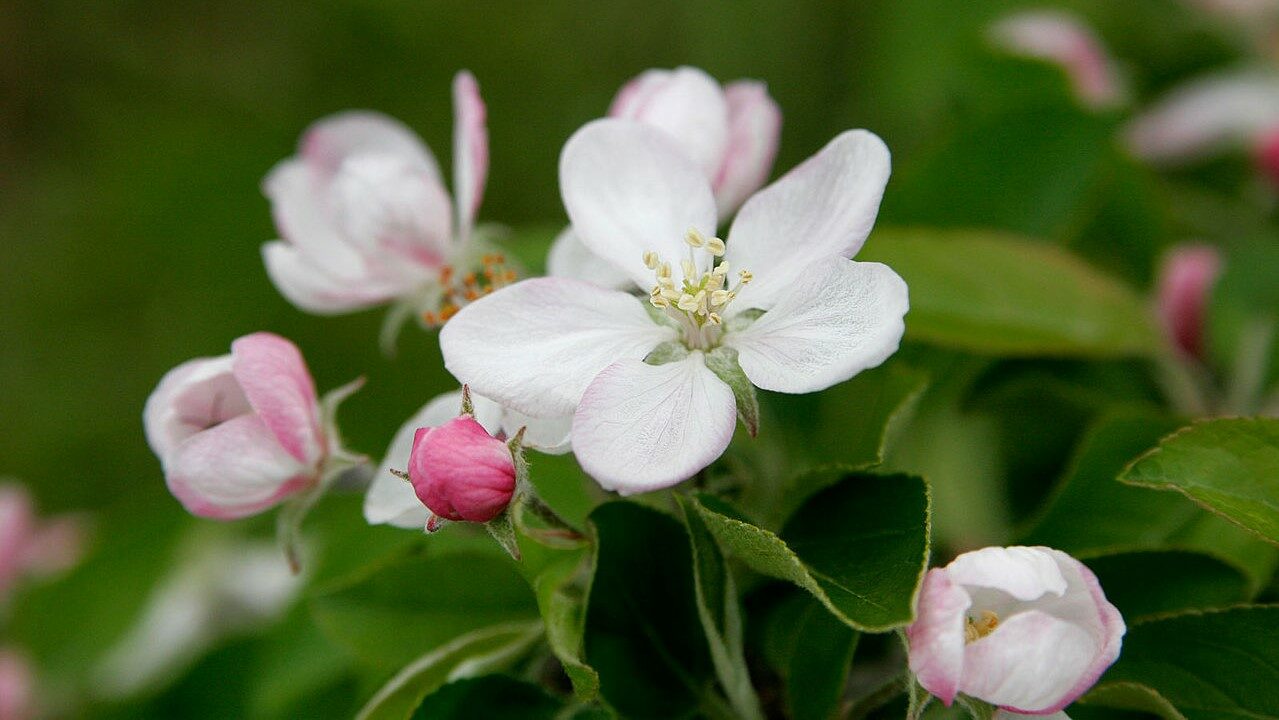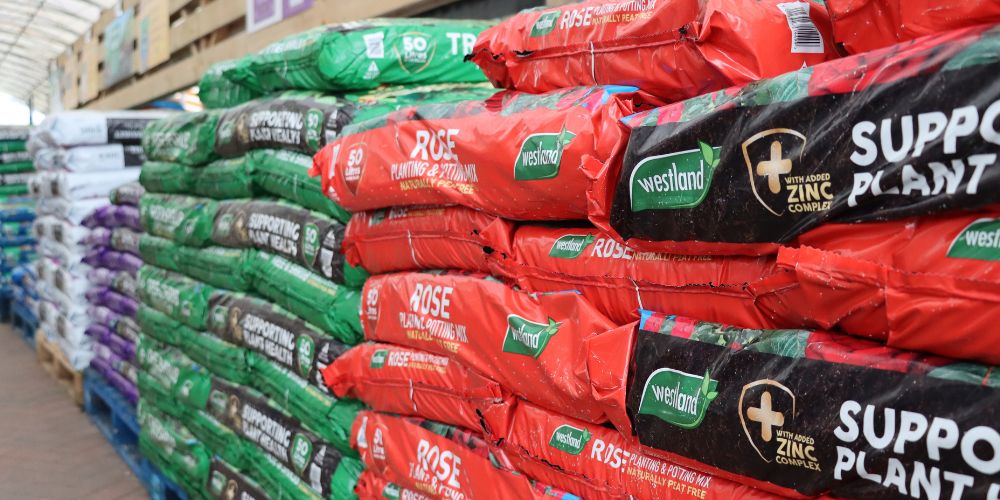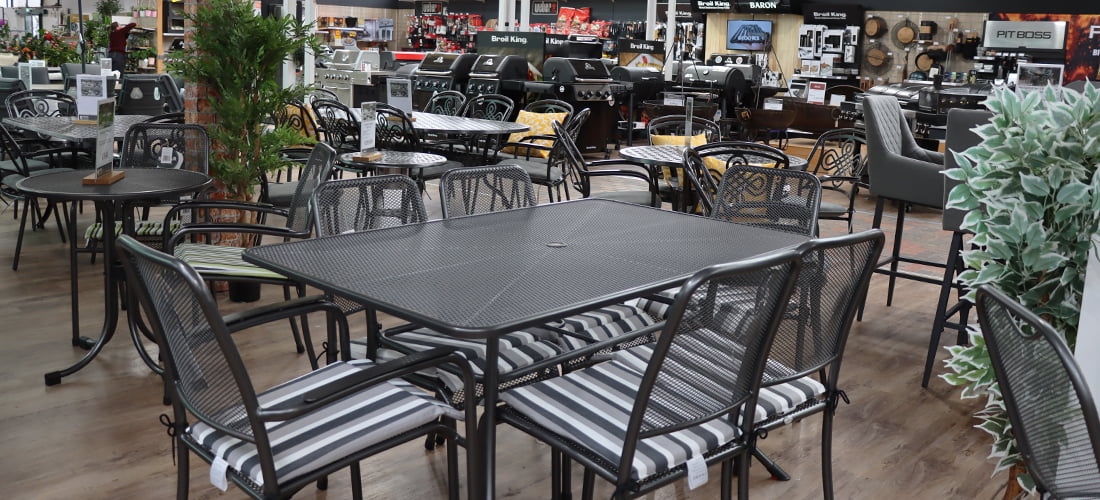POSITION AND PREPERATION
Do not plant a tree where one of the same type has grown before.
Apples, cherries and plums need a sunny, sheltered site with good soil. If your soil is shallow, sandy or chalky dig in a reasonable amount of compost prior to planting. If you are planning to grow one of the dwarfing varieties bear in mind that they need very good conditions to perform well.
Pears and peaches need a slightly warmer site than apples as they flower earlier and so are more prone to frost damage, south or west facing is best. They don’t like shallow chalky or sandy soil so remember to add compost, mulch well and possibly feed with sequestered iron. They are not tolerant of salty air.
Mulberries like moist and slightly acid soil. As they start to grow relatively late in the Spring they are less prone to frost damage. Quinces also like moist and slightly acid soil. They need sun and shelter and are best grown against a wall in colder areas.
Always plant in the best possible position, this will ensure that you have a healthy long-lived tree. Weed the area thoroughly beforehand, and if your soil needs improving try and dig in well rotted manure or compost some weeks before planting.
GENERAL CARE
Mulch in spring and water if the weather is very dry. Feed in spring with a general purpose fertiliser raked into the soil above the roots. Only feed sweet cherries if the soil is poor. Acid cherries will benefit from a feed.
Figs in open ground will need mulching but not feeding. Feed container plants a low amount to prevent excess leafy growth. For quince and biennial apple bearers (crops very heavily one year and lightly the next) it may be necessary to thin the blossom. Remove about 90% of blossoms. If your tree is tall just do the branches you can reach. Fruit thinning improves the quality and flavour and should be done twice (after the June drop and at mid-summer). The first time remove the central fruit of the cluster and any damaged ones, then thin to 1 per cluster the second time.
Pears are treated in the same way as apples in general but there are a few differences. Pears live longer, and are slower to come into fruit. They are less prone to pests and diseases. Mulch in spring and water when dry. Protect embryo figs from frost with straw (Embryo figs are small pea sized fruit that are on the tree in September, these will be next years figs).
To protect from peach leaf curl, they should be kept under cover (polythene or glass) from early Jan. until mid–spring. Protect the blossom from frost and water well when dry. Thin fruit when hazelnut size to 1 per cluster and when walnut size to 22cm apart.
ROOTSTOCKS
In order of size: M27 (5-6ft ), M9 (8-10ft), M26 (10-12ft), MM106 (14-16ft) and MM111 (18-25ft), are the most commonly used. Bear in mind that the root stock is there to inhibit the growth of the variety and more dwarfing rootstocks will be less robust (they do not tolerate bad conditions and need permanent staking as they have few tap roots). However a dwarf tree will fruit earlier. If you are growing a trained form like an espalier it is best to go for a slightly more vigorous rootstock. Pears are grown on Quince rootstock to provide a smaller tree that fruits earlier (wild pears are big trees and can take 15 years to fruit) Quince A is equivalent to the apple M26 and Quince C to M9. Occasionally pears are grafted on to wild pear (Pyrus) rootstock if they are to be grown in poor conditions (If the rootstock is unnamed it is likely to be Quince A).
Mulberries are grown on their own roots. Quinces tend to sucker a lot if grown on their own roots so are normally grown on Quince A. Cherries tend to be grown on Colt rootstock. Figs are grown on their own roots. Peaches are mainly grown on St Julien A or Brompton both will reach a height of about 3.8m.Terrace peaches are grown on Peach Seedling rootstock and the variety is often a genetic dwarf. Plums are grown on either Pixy (2.2m), St Julien A (4m), Brompton (4.5m ) or Myrobalan (4.5m).
POLLINATION
There are few apples that are reliably self-fertile (Self-fertile Cox’s and ‘Family’ trees which have more than one variety grafted on one tree) Some apple varieties will need one tree as a pollination partner some may need two ( it is always worth checking with your neighbours when buying a tree, just in case they have an apple tree of their own which might be a suitable pollinator. Check a pollination list or chart before buying. Pears will also need a pollinator or two. As pears are less widely grown it is less likely that there will be a pollinator in the area.
Most sweet cherries need a pollination partner, acid cherries are less likely to, but do check when buying as some need a particular tree Stella, Morello, Nabella and Sunburst are self-fertile. Mulberries and quinces are self fertile. Figs are self-fertile and do not need a pollination partner or hand pollinating. Most peaches are self-fertile but as they flower very early in the year when there are few insects around they frequently need hand pollination.
Some plums are self-fertile and some need a pollinator. It can be easier to buy one the self-fertile ones like Victoria or Czar. It is possible that plums may need some hand pollination.
Most fruit trees will produce a better crop with a pollinator present even if they are self-fertile.
PRUNING SHAPES
Apples are grown in many different forms: Spindlebush, standard, half standard, bush, pyramid, cordon, fan, espalier, stepover, Minarette or Ballerina. Some forms are too big for most gardens and some require a lot of training in early years, some like the Ballerina are very easy to care for and have already been trained when you receive them. Pears are grown in the same forms as apples except Ballerinas.
Mulberries are grown in an open tree form-very little pruning is required. Quinces are grown as an open centred bush about 12ft high. Cherries and figs tend to be grown as either bushes or fans. The advantage of fans is that they are easily protected from birds. Also a south-facing wall will stay warmer for longer. Figs grown in open ground they can get a little out of control and produce mainly leafy growth so the roots will need to be restricted.
Peaches are best trained on a wall as a fan, grown in a container or grown under glass. This means that they will receive the maximum warmth and protection, and will also make hand pollination and protection from frost and peach leaf curl a lot easier. Plums are also grown mainly as bushes or fans, for similar reasons.
PRUNING MAINTENANCE
On all types of fruit the most important pruning is to remove all dead, diseased and damaged wood. This will keep your tree healthy. Then remove any branches that will spoil the shape or cross the centre of the tree.
Tip bearing bush and standard forms should have some of the leaders cut back but nothing else. Spur bearers should have central laterals cut back if they are growing beyond the branch leader. Any round the edge of the tree should be left. Thin some of the spurs if they become overcrowded. For a cordon, prune in summer (July/August). Espaliers are pruned the same way and older ones may require spur thinning. Pears are pruned as for apples.
Cherries and peaches must be pruned in the summer to avoid infection with silver leaf. Sweet cherries produce their fruit on 2-yr-old or older wood so pruning aims to restrict leafy growth. Acid cherries and peaches fruit on 1-yr-old wood so pruning is done to remove old wood and encourage new growth. Plums will flower on both 1 and 2-yr-old wood. Mulberries are pruned as little as possible and only when they are dormant in mid-winter. They have a tendency to bleed profusely (cauterise with a hot poker). It is a good idea to thin out buds on most fruit trees to ensure a healthy crop.
Bush-trained or container-grown figs should just be pruned to remove crowded, crossing or damaged wood and to keep the centre of the bush open – prune to a shoot that faces outwards. Fan-trained trees need to be cut back in early spring to remove old fruited wood and frost damaged wood and tie in new shoots as appropriate. At mid-summer pinch out the tips of the shoots to 5 leaves, the embryo figs should develop on these shoots.
Quinces are quite simple. In the first few year the leaders are cut back in winter to about 1/2 the level of this years growth. Once the framework is established prune as little as possible. They do not react well to being trained.
CONTAINERS
Most plants can be grown in a container, but bear in mind that the fruit yield may be considerably lower and the plant more difficult to care for. Use a large container or barrel and a loam based rather than peat or coir based compost. (John Innes no3).
Apples make good container plants which have some advantage over those grown in the ground. They are easily protected from birds and frost, they can be taken inside on rough nights and they are simple to spray if necessary. However you will have to pay more attention to watering , feeding and thinning. Use a large pot 30 – 45cm, and a good loam-based compost (peat/coir based is too light and breaks down too quickly). It will be necessary to insulate the pot in very cold weather, or move it indoors. Remember to use dwarf varieties. Pears could be grown as a Minarette in a container.
Cherries can be grown in containers as patio plants and are more easily protected from birds. The variety to use would be Stella on Colt rootstock. They will have to be more carefully watered and fed. Figs are ideal to grow in containers as they can be protected from the frost more easily and the container restricts their root growth. Grow in a good loam based compost and repot each year. They do benefit from root pruning when being repotted. Peaches are also good for containers if you buy a patio or terrace type, these need little or no pruning and are easy to pollinate and protect from frost and peach leaf curl.
Mulberries, quinces and plums are not normally grown in containers.
PESTS
Birds – Eat buds and fruit. The only real protection is to net the trees. This can be impossible for large trees and is often the reason that people buy dwarf trees.
Caterpillars – There are many different caterpillars that affect fruit trees at different times – some eating the leaves or buds or blossom, some the fruit. Many can be controlled by following a spraying programme as shown in the Fruit Tree Calendar although it is often sufficient to pick off the ones you see. Don’t forget to put on greasebands in October as it will prevent eggs being laid for next year. A tar oil wash in the winter also helps to destroy overwintering eggs.
Codling Moth grubs bore into the fruit and eat from the inside out. They can be controlled by using pheromone traps.
Greenfly cause distortion of leaves and growing tip, often sticky honey dew is present. Control by spraying every fortnight from bud burst onwards.
Cherry Blackfly – distorted leaves at the tips of branches, the leaves are often sticky and blackened. If you look carefully you will find the aphids, and possibly also the ants that farm them. Spray from bud burst onwards to control– removing nearby ants nests may help a little.
Pear And Cherry Slugworm skeletonises the leaves but can be controlled by spraying, or picking off.
Greenfly – Curled leaves or distorted growth, green aphids near the growing tips. Spray from bud burst to control.
Red Spider Mite – Can be a problem when hot and dry or on fruit indoors – the leaves will have a mottled look and tiny mites will be found on the underside of leaves. Spray with an appropriate insecticide.
Sawfly – Eggs are laid in immature fruit and the grub eats its way out – spray at petal fall if it is a problem.
Wasps – Eat the fruit clear up windfalls and rotting fruit. It may help to destroy nearby wasps nests, but it should be done professionally.
DISORDERS
Russetting (apples) is a rough browny surface on the fruit. If it happens on non-russet varieties it does not harm the flavour and may be due to bad weather, mildew drought starvation or poor soil.
Blossom Drop (all) – If it happens every year it is quite often due to the lack of a pollinator. It can also be caused by frost, over-exposed position and for early blossoming trees, lack of pollinating insects.
Frost (all) can cause the blossom to drop off– try not to plant your tree in a site exposed to frost. If you have problems then cover blossom with fleece or net overnight.
Split Bark (all) – Often caused by poor staking, poor drainage or frost. Cut away affected area and try to remedy cause.
DISEASES
Brown Rot causes fruit to turn brown with yellowy rings of mould. It hangs on the tree rather than falling off. Pick off all affected fruit and destroy immediately.
Fireblight causes shoots wilt and die leaving the dead leaves on the tree. The plant will look like it has been too close to a fire. Cankers may ooze gum in the spring. Cut out all affected areas and burn wood. If the disease has spread to the trunk the tree will die. Disinfect all tools used.
Mildew – Grey-white young shoots in spring lead to stunted growth. Cut and burn all affected areas as soon as possible. Follow the spraying programme to control.
Scab can attack all parts of tree. Fruit is patchy with corky areas, the leaves are spotty and twigs blistered. Follow the spraying programme. Rake up leaves in autumn and prune off affected parts in winter. Can be worse in wet years.
Bacterial Canker – Flat cankers oozing gum and pale edges spots on leaves, shoots dying back. Cut out infected areas and follow the spraying programme in the Fruit Tree Calendar.
Brown Rot – Fruit turns brown with rings of yellowy mould, hangs on the tree rather than falling off. Remove and destroy affected fruit immediately.
Coral Spot – Pink spots spread from dead to live wood. Cut out, and remove all dead wood for the area.
Grey Mould – Remove infected parts and spray with fungicide try to allow more ventilation.
Peach Leaf Curl – Large reddish blisters develop on leaves. Follow the spraying programme.
Silver Leaf – The most serious disease, effecting plums, cherries, peaches and apples. Silvery leaves with dying shoots. Cut out all infected wood 15cm below line of infection.There is not currently a fungicide suitable for fruit trees available on the UK market.
.
REASONS FOR POOR FRUIT PRODUCTION
Tree not old enough most trees take a few years to reach fruiting age. It is best not to let them fruit in the first year after planting or it may over-tire it and affect fruit production for its whole life.
Poor pruning/planting-it is important to plant the tree carefully in the right position so that it is healthy. It is also important to prune properly too much and the tree will produce a lot of green growth and few fruit too little and it will become tangled and unhealthy. Prune in the wrong place and you may cut off next years fruit buds!
Frost on the blossom may drastically reduce the amount of fruit that is produced try covering with fleece at night if you have this problem.
Feeding – if you overfeed you will get leaves at the expense of fruit, and if you underfeed you will have very little fruit. Rake in some general fertiliser every spring.








